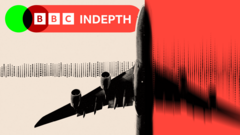The climate crisis is exacerbating conditions leading to turbulence. Changes in temperature and wind patterns are causing both convective and clear-air turbulence to increase significantly, with certain routes experiencing a dramatic uptick in turbulence incidents over the years. This situation not only poses safety risks but also economic burdens for airlines as they deal with increased maintenance and compensation costs.
In response, airlines are exploring innovative measures to enhance safety and passenger comfort. Improved forecasting technology helps pilots navigate turbulent areas more effectively. Airlines are implementing strategies such as earlier cabin service cutoffs to minimize injury risks during flights. Additionally, advancements in aircraft design and turbulence-canceling technologies are being researched, although widespread implementation remains a future goal.
As turbulence becomes a more frequent and severe issue in air travel, both airlines and passengers must adapt. While the physical dangers may increase, experts suggest many advancements in technology and safety protocols can effectively mitigate risks, allowing passengers to fly with greater confidence. Nonetheless, the emotional toll on nervous flyers remains a lingering concern for the aviation industry.
In response, airlines are exploring innovative measures to enhance safety and passenger comfort. Improved forecasting technology helps pilots navigate turbulent areas more effectively. Airlines are implementing strategies such as earlier cabin service cutoffs to minimize injury risks during flights. Additionally, advancements in aircraft design and turbulence-canceling technologies are being researched, although widespread implementation remains a future goal.
As turbulence becomes a more frequent and severe issue in air travel, both airlines and passengers must adapt. While the physical dangers may increase, experts suggest many advancements in technology and safety protocols can effectively mitigate risks, allowing passengers to fly with greater confidence. Nonetheless, the emotional toll on nervous flyers remains a lingering concern for the aviation industry.





















